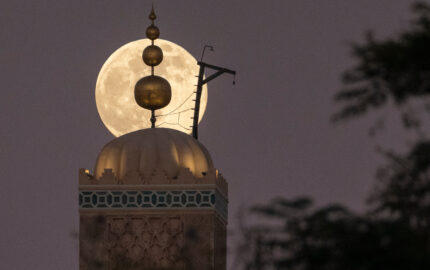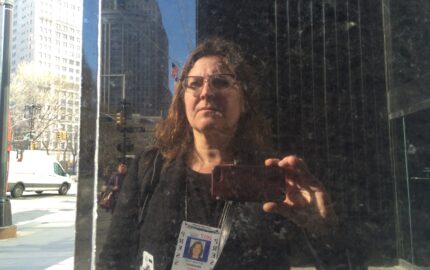Major League Baseball, that beloved summer sport, returns to a shortened season later this month. Or at least it is scheduled to, but as with all things in the time of coronavirus, schedules are subject to change.
In honor of that hope, and of the release of the movie version of "Hamilton," we offer thanks to this week's newsletter by big-hearted writer Tommy Tomlinson. No matter that Hamilton was making trouble for the King of England 150 years before baseball was invented — both are quintessential parts of American history and culture. Tomlinson managed to connect some pretty direct dots between the two — one that had me drawing a third connection to journalism.
Tomlinson and his wife, Alix, had seen the touring show "Hamilton" when it played on stage in Charlotte, North Carolina, a few years ago. This past weekend, they found themselves re-enchanted by the film version, which they watched on the TV in their living room.
What does that have to do with baseball? Tomlinson writes this:
What does any of that have to do with journalism?
I remember some years ago when Roy Peter Clark of the Poynter Institute introduced me to the idea of the "triple threat" journalist: the professional who can write, edit and coach with equal skill. In Clark's experience, that's a rare combination. Indeed, some of the biggest names in the field have earned their status because they excel at a subset skill: They are breathtaking writers who aren't deft with data, or maybe investigative reporters whose writing is a bit wooden. The best know they must partner with others to shore up the rest of their game. The best of the best give full credit when they do.
I like that idea because it means we need to acknowledge that journalism, at its best, is a team sport — something that hasn't always been comfortable in a culture that prides competitiveness. But if you want proof of the power of teamwork:
Watch the scene in "All the President's Men" when Carl Bernstein rewrites Bob Woodward's scoop reporting, and how they negotiate their partnership to produce the Watergate stories. Or read behind-the-scenes interviews with journalists who have delivered double-bylined triumphs. The New York Times tag team of Jodi Kantor and Megan Twohey, who covered the #MeToo movement and delivered the compelling book "She Said," comes to mind. I once heard Pulitzer Prize-winning beat and investigative reporter Dana Priest tell a conference audience that when she received tips about abuses at Walter Reed Hospital, she knew she needed a sensitive interviewer and elegant writer to bring the scandals to life, so reached out to Anne Hull. Or maybe it was the other way around, with Hull getting the tip and reaching out to Priest, knowing she wanted to partner with someone who knew her way through the dead-end mazes of the U.S. military. Even better, when they won the Pulitzer Gold Medal in Public Service, photographer Michel du Cille got the equal billing his work deserved.
So maybe in journalism these days, a triple threat doesn't cover the bases. (I know; bad pun.) Maybe we need our own five-tool thinking: the matrix of skills that involve reporting, writing, editing, teaching and visual storytelling in any or all of its forms. The real need, it seems to me, is for each of us to recognize our strongest plays, or the tools we wield with greatest mastery — and find others to play with to up our game.
In honor of that hope, and of the release of the movie version of "Hamilton," we offer thanks to this week's newsletter by big-hearted writer Tommy Tomlinson. No matter that Hamilton was making trouble for the King of England 150 years before baseball was invented — both are quintessential parts of American history and culture. Tomlinson managed to connect some pretty direct dots between the two — one that had me drawing a third connection to journalism.
Tomlinson and his wife, Alix, had seen the touring show "Hamilton" when it played on stage in Charlotte, North Carolina, a few years ago. This past weekend, they found themselves re-enchanted by the film version, which they watched on the TV in their living room.
What does that have to do with baseball? Tomlinson writes this:
... no other people in the arts have the ridiculous talents of Broadway musical stars. In baseball they talk about the best of the best being five-tool players: hitting, hitting for power, running, throwing and fielding. In Broadway musicals, everybody has to sing, dance, do drama, do comedy -- and in "Hamilton," rap. That stage was full of five-tool players.
Multiple skills for the multi-media era
What does any of that have to do with journalism?
I remember some years ago when Roy Peter Clark of the Poynter Institute introduced me to the idea of the "triple threat" journalist: the professional who can write, edit and coach with equal skill. In Clark's experience, that's a rare combination. Indeed, some of the biggest names in the field have earned their status because they excel at a subset skill: They are breathtaking writers who aren't deft with data, or maybe investigative reporters whose writing is a bit wooden. The best know they must partner with others to shore up the rest of their game. The best of the best give full credit when they do.
I like that idea because it means we need to acknowledge that journalism, at its best, is a team sport — something that hasn't always been comfortable in a culture that prides competitiveness. But if you want proof of the power of teamwork:
Watch the scene in "All the President's Men" when Carl Bernstein rewrites Bob Woodward's scoop reporting, and how they negotiate their partnership to produce the Watergate stories. Or read behind-the-scenes interviews with journalists who have delivered double-bylined triumphs. The New York Times tag team of Jodi Kantor and Megan Twohey, who covered the #MeToo movement and delivered the compelling book "She Said," comes to mind. I once heard Pulitzer Prize-winning beat and investigative reporter Dana Priest tell a conference audience that when she received tips about abuses at Walter Reed Hospital, she knew she needed a sensitive interviewer and elegant writer to bring the scandals to life, so reached out to Anne Hull. Or maybe it was the other way around, with Hull getting the tip and reaching out to Priest, knowing she wanted to partner with someone who knew her way through the dead-end mazes of the U.S. military. Even better, when they won the Pulitzer Gold Medal in Public Service, photographer Michel du Cille got the equal billing his work deserved.
So maybe in journalism these days, a triple threat doesn't cover the bases. (I know; bad pun.) Maybe we need our own five-tool thinking: the matrix of skills that involve reporting, writing, editing, teaching and visual storytelling in any or all of its forms. The real need, it seems to me, is for each of us to recognize our strongest plays, or the tools we wield with greatest mastery — and find others to play with to up our game.



